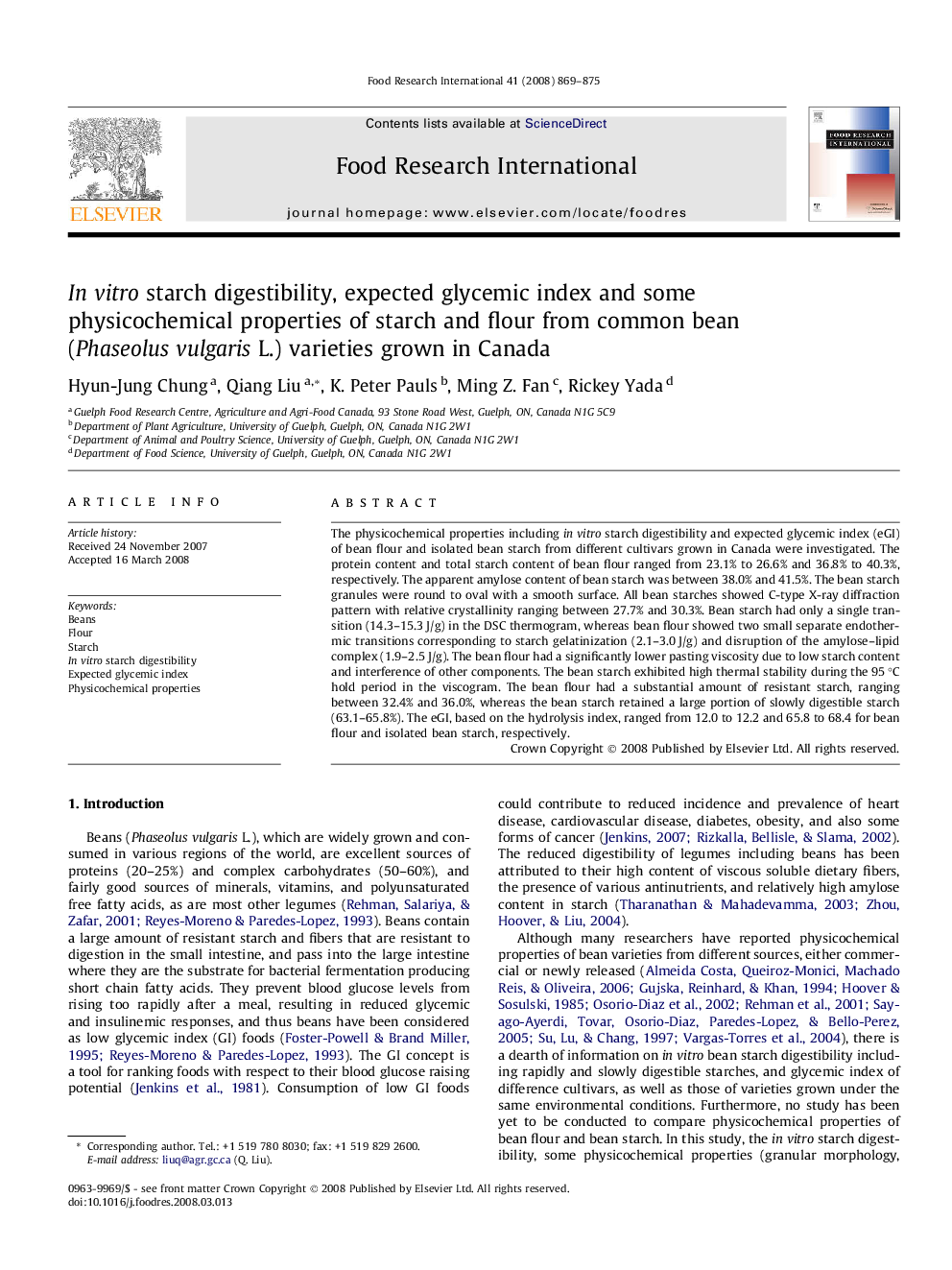| Article ID | Journal | Published Year | Pages | File Type |
|---|---|---|---|---|
| 4562503 | Food Research International | 2008 | 7 Pages |
The physicochemical properties including in vitro starch digestibility and expected glycemic index (eGI) of bean flour and isolated bean starch from different cultivars grown in Canada were investigated. The protein content and total starch content of bean flour ranged from 23.1% to 26.6% and 36.8% to 40.3%, respectively. The apparent amylose content of bean starch was between 38.0% and 41.5%. The bean starch granules were round to oval with a smooth surface. All bean starches showed C-type X-ray diffraction pattern with relative crystallinity ranging between 27.7% and 30.3%. Bean starch had only a single transition (14.3–15.3 J/g) in the DSC thermogram, whereas bean flour showed two small separate endothermic transitions corresponding to starch gelatinization (2.1–3.0 J/g) and disruption of the amylose–lipid complex (1.9–2.5 J/g). The bean flour had a significantly lower pasting viscosity due to low starch content and interference of other components. The bean starch exhibited high thermal stability during the 95 °C hold period in the viscogram. The bean flour had a substantial amount of resistant starch, ranging between 32.4% and 36.0%, whereas the bean starch retained a large portion of slowly digestible starch (63.1–65.8%). The eGI, based on the hydrolysis index, ranged from 12.0 to 12.2 and 65.8 to 68.4 for bean flour and isolated bean starch, respectively.
